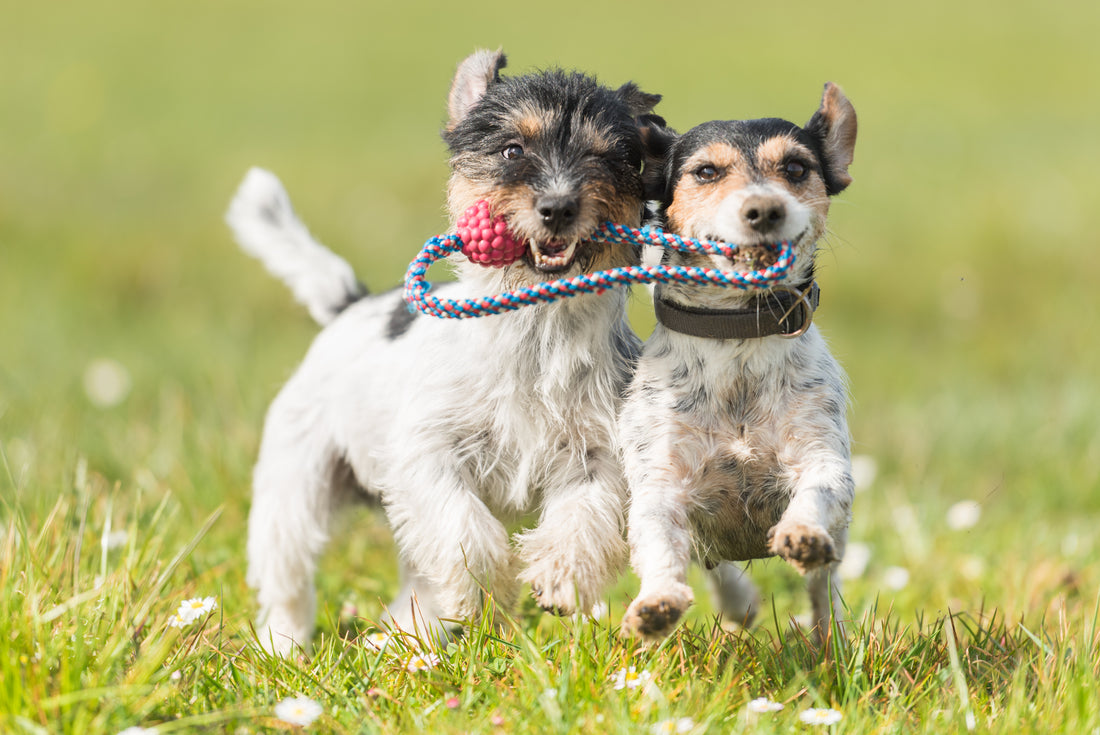To Fido, the dog park is heaven on Earth. It’s full of sights, smells, and distractions that are hard to find at home. More importantly, it’s also a great place for our pooches to make friends. And, as long as they follow the rules in Dog Park Politics And Commandments, things should go smoothly. Sometimes, however, we get in the way of that. By forcing our dogs into undesirable situations, we create pooches that are skittish, territorial, or just plain aggressive. To keep that from happening, we’ve provided a list of seven things we can do to help Fido master dog-on-dog etiquette.
7 Things We Can Do to Help
Wild dogs grow up surrounded by pooches of varying ages and temperaments. Therefore, they quickly learn what is right, what is wrong, and what’s just plain unacceptable. But, our dogs rarely get a chance to do that. Instead, they are leashed, crated, and fenced in order to survive in a world full of cars and pedestrians. As guardians, it’s our job to fill in the gap by ensuring that our dogs are:
Well-socialized dogs are calm, happy dogs. While socialization is part of every puppy class, it must be done carefully. When done incorrectly, socialization can help create a nervous or overly-aggressive dog. If there’s something we want our puppy to be cool with as an adult, we need to introduce them to it early on. While it’s possible to fix poor socialization in an adult dog, it’s much easier to never deal with the problem in the first place. Things like doggie daycare and obedience classes are a great way to speed up the process. Use positive training techniques to help Fido associate strangers with all that’s good in the world.
Don't punish pups for not getting along with absolutely everyone. Though she’s perfectly civil, there’s something about Diane in accounting that just rubs us the wrong way. It’s the same for our fur babies. While we’d love for them to be best buds with everybody, it’s just not possible. When we see a dog that Rufus or Miss Barks isn’t particularly fond of, it’s important that we redirect our dog’s attention. We should also never punish our dog for having playmate preferences. Doing so will make our dog more reluctant to communicate his or her discomfort.
Keep an appropriate distance. Though our pooch might be the amicable type, that doesn’t hold true for everyone. If we see that another dog is anxious about our pup’s playfulness, it’s our job to call our pooch to heel. When we approach an area where other dogs are present, we should double check that the owner is alright with us letting our dog loose.
Give proper amount of attention. That Candy Crush addiction is no reason to ignore our dog. When we’re in an area with a lot of distractions, such as the dog park, we need to watch our pup like a hawk. This means putting the cell phone away and only flirting with that cute jogger when Rufus is back on his leash. Remember, it only takes a few seconds for a dog park showdown to get ugly.
Be masters of basic obedience. When things go sour, it’s important that we have the ability to redirect our pup’s attention. Through lots of treats and belly rubs, we can ensure that we’re way more interesting than anything at the dog park. But, none of this matters if Fido doesn’t come when called. By making sure our dog is a master of the sit, stay, heel, and come commands, we can nip any dog-on-dog aggression in the bud.
Spayed or Neutered. Though some pet guardians feel guilty about it, getting our pets spayed and neutered is one of the best ways to curb dog-on-dog aggression. Bringing an unaltered dog to the dog park is like throwing chum in shark-infested waters. The smell of untampered hormones, in many cases, will distract and irritate other dogs. If we have nowhere else for our intact dog to play, we should at least refrain from visiting the park during peak hours.
Be knowledgeable. While we all know what a wagging tail means, most of us aren’t very good at reading canine body language. We can remedy this by reading a few articles on the subject. By watching for telltale signs that Rufus is uncomfortable, we can stop doggie disagreements from exploding into full out war. If we notice another dog displaying signs of anxiety of discomfort, it’s our job to keep our fur baby from making it worse.
Even if they don’t get the benefit of a real pack, there’s no reason our fur babies have to be social ignoramuses. While these tips might help most dogs, every dog is different, and it’s up to us to find what works best for our dogs. With patience and positivity, our dog will quickly go from dog park zero to dog pack hero.

